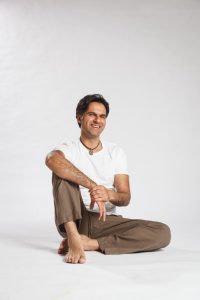
 I admit I am obsessed with the somatic approach to therapy. I have been a bodyworker for 18 years and am trained as; a homeopath, healer, acupuncturist, counsellor and I now specialize in the somatic approach to trauma therapy. Everything I have learned has lead me up to this approach of working. As Bessel van der Kolk says in his seminal work on somatic therapy ‘the body keeps the score’.
I admit I am obsessed with the somatic approach to therapy. I have been a bodyworker for 18 years and am trained as; a homeopath, healer, acupuncturist, counsellor and I now specialize in the somatic approach to trauma therapy. Everything I have learned has lead me up to this approach of working. As Bessel van der Kolk says in his seminal work on somatic therapy ‘the body keeps the score’.
I can assure you that when you really pay attention, there isn’t a thought without a corresponding sensation and there isn’t a sensation that exists in your body that doesn’t connect with a thought or feeling. You and I are thought in motion.
Somatic bodywork is a multi-disciplinary approach. It brings all parts of our being together in a joyful multi-sensory epiphany of awareness and integration. In less flowery language you could say it brings a person's physical, mental, emotional and psychological experience into being on the massage table.
Why work with the body? Who am I, what problem am I trying to solve?
Often when we are overwhelmed we start to experience disconnect and discordance in our being, thinking and feeling; what we say, what we express how we move. Everything gets so jumbled up and tangled inside that we can’t know what is wrong with us without help. Trauma looks like this. I have heard Peter Levine and Gabore Mate, both leading lights in Somatic therapy say, ‘Trauma isn’t what happened to us, it’s what happens inside of us’. Events can be big or small. Trauma isn’t about the event, but the response and resilience of our nervous system. Somatic work helps to process what was left unprocessed and therefore complete what was left incomplete.
What does a session look like?

Often, after trauma people don’t trust their bodies. They don’t feel safe in their home. A session could start with body scanning and supported touch:
What does this part of your body feel like?
How is it to receive contact?
What does it feel like to breathe?
Where can you feel your breath?
What does contact feel like?
When contact is withdrawn what does that feel like? Do you melt into contact or does your body tighten against it? How do you know?
One of the hallmarks of trauma is ‘too much, too fast, too soon’. The purpose of my work is to slow things down. Then we can unpack, unravel, experience and most importantly explore in a safe way.
Often in a session thoughts and feelings come to the surface and when they do, we make space for them. If you give a thought, feeling or a sensation space, it often reduces in intensity: it has space to let go. Insights and connections are made which lead to further healing. It’s a golden circle and process towards wholeness.
Who would benefit?
If you have read this far, you might have realized that everyone can benefit from this approach. If you already love bodywork this can take your total awareness so much deeper. If you are totally new to this work it’s a great adventure to self knowledge. If you have pain in your body, this can show you how your body holds on to pain. If you have experienced trauma, this work can assist you in feeling safe in your body - safe with contact, touch and connection. You can rebuild and repair your relationship with your body. I have worked with hundreds of clients who have had profound and life changing experiences and yet the approach is gentle, relaxing, and deeply nourishing. Healing happens by itself, all it needs is a gentle holding space to unravel.
Conclusion
A Sufi mystic called Rumi said, “Your task is not to seek for love, but merely to seek and find all the barriers within yourself that you have built against it.” Somatic bodywork works with the same principle. We meet the barriers and we gently spend some time at their edges until they are recognized. When we recognize, we can make the choice of letting go, of choosing to travel down a different pathway. This creates new neural networks that support us to make the unfamiliar familiar. Everyone needs a little support once in a while. If you are wise, you will build your support in at regular intervals. Often the case is that we reach out only when things are already too much.
What would a life with support built into it look like? I’m guessing it would look very relaxing.
Visit my website to learn more about my work.
www.embodimentworks.co.uk






